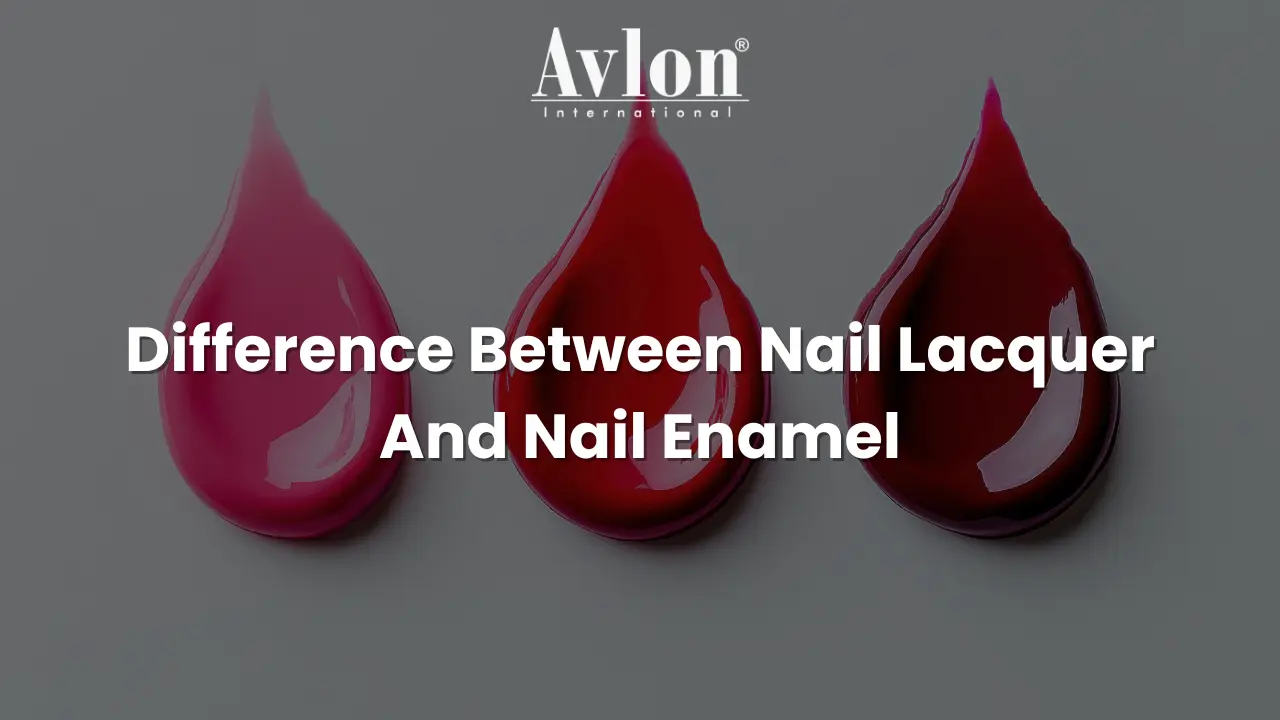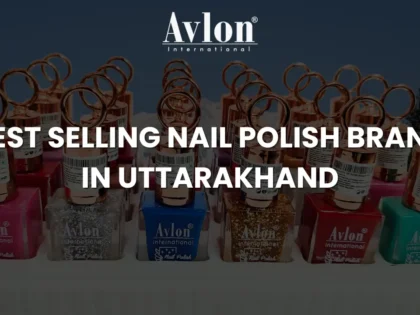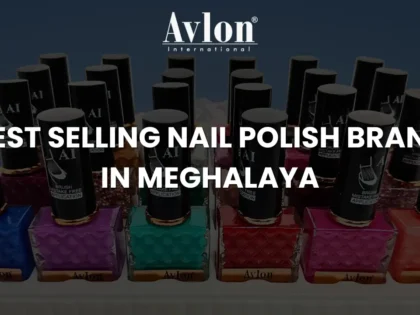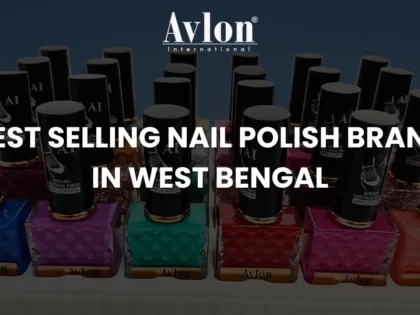Difference Between Nail Lacquer And Nail Enamel

For Distributors & Wholesalers
We welcome partnerships with distributors and wholesalers who wish to expand their business with a trusted and growing cosmetic brand.
Why Partner with Avlon International?
- Wide range of cosmetics: Nail polish, mascara, kajal, eyeliner, liquid lipstick, lipstick & more.
- Premium quality with competitive wholesale pricing.
- Attractive margins and fast-moving products.
- Assured support with marketing materials & promotional offers.
- PAN India shipping with secure packaging.
📦 Minimum Order Quantity (MOQ): 1 master carton (72 trays)
💰 Special Discounts: Available for bulk & long-term partners.
🚚 Dispatch & Delivery: PAN India in around 10-15 days.
📞 Contact Us:
Phone / WhatsApp: +91 88105 67775
Email: contactus@avloninternational.com
Website: www.avloninternational.com
Have you ever stood in the nail polish aisle, staring at bottles labeled “lacquer” and “enamel,” wondering if you’ve accidentally wandered into a hardware store? Don’t worry – you’re not alone in this colorful confusion! The difference between nail lacquer and nail enamel has puzzled beauty enthusiasts for decades, and today we’re diving deep into this glossy mystery.
What’s in a Name? The Historical Journey of Nail Beauty
Before we paint ourselves into a corner with technical details, let’s take a trip down memory lane. The art of nail decoration dates back thousands of years, but the modern nail polish industry as we know it really took off in the 1920s. Back then, automotive paint technology inspired the first commercial nail lacquers – yes, you read that right! Your manicure has more in common with car paint than you might think.
The terms “lacquer” and “enamel” have been tossed around the beauty industry like confetti at a gender reveal party, often creating more confusion than clarity. Professional brands like Avlon International have worked tirelessly to educate consumers about these distinctions while developing high-quality formulations that deliver exceptional results.
Breaking Down the Basics: Understanding Nail Lacquer
Nail lacquer is essentially a liquid film that hardens when exposed to air. Think of it as a tiny miracle in a bottle – you brush it on wet, and through the magic of evaporation, it transforms into a beautiful, protective coating on your nails.
The Science Behind the Shine
Nail lacquer typically contains several key ingredients that work together like a well-choreographed dance routine:
Film Formers: These are the backbone of your lacquer, usually nitrocellulose or other polymers that create the actual “film” on your nail. They’re like the foundation of a house – not particularly glamorous, but absolutely essential.
Solvents: These keep the lacquer in liquid form until you’re ready to apply it. Common solvents include ethyl acetate and butyl acetate, which sound scary but are actually what make your polish spreadable and smooth.
Plasticizers: These ingredients keep your dried polish from becoming as brittle as autumn leaves. Nobody wants their manicure cracking like old paint on a garden fence!
Colorants: The fun stuff! These pigments and dyes give your lacquer its personality, whether you’re going for “subtle sophistication” or “look-at-me-from-space” vibrancy.
Special Additives: UV stabilizers, thickeners, and other specialty ingredients that enhance performance and longevity.
The Lacquer Experience
When you apply nail lacquer, you’re essentially creating a thin plastic film on your nails. The solvents evaporate (that’s why you smell that distinctive nail polish scent), leaving behind a solid, colorful coating. This process typically takes 10-15 minutes for complete drying, though the surface may feel dry much sooner.
Quality lacquer formulations, such as those developed by Avlon International, focus on optimizing this drying process while maintaining excellent color payoff and durability. The goal is to create a product that goes on smoothly, dries evenly, and stays put through daily activities.
Demystifying Nail Enamel: The Other Side of the Coin
Now, let’s talk about nail enamel – the mysterious cousin in the nail polish family. Historically, true enamel was a completely different beast altogether. Traditional enamel was a vitreous coating that required high-temperature firing, similar to what you’d find on cookware or jewelry.
The Modern Enamel Evolution
In today’s beauty world, the term “nail enamel” has evolved significantly. Most products labeled as nail enamel are actually very similar to lacquers in their basic composition. The main differences often lie in:
Viscosity and Texture: Nail enamels are frequently formulated to be slightly thicker and more opaque than traditional lacquers. This can result in better coverage in fewer coats – a blessing for those of us who have the patience of a caffeinated hummingbird when it comes to nail care.
Pigment Concentration: Many enamels contain higher concentrations of pigments, resulting in richer, more saturated colors. Think of it as the difference between watercolor and acrylic paint – both beautiful, but with different strengths.
Durability Focus: Enamel formulations often emphasize longevity and chip resistance. They’re designed for people who want their manicure to survive everything from typing marathons to gardening adventures.
Application Properties: Enamels are typically formulated for easier, more foolproof application. They tend to self-level better, meaning fewer streaks and more professional-looking results.
The Great Showdown: Lacquer vs Enamel Head-to-Head
Let’s get down to the nitty-gritty and compare these two nail superstars across various categories:
Application and Ease of Use
Nail Lacquer: Generally thinner consistency, which can be both a blessing and a curse. On the positive side, lacquers often go on smoothly and evenly. However, this can sometimes mean you need multiple coats for full opacity. The thinner formula also means you need a steadier hand to avoid streaking.
Nail Enamel: Usually more forgiving for beginners. The thicker consistency helps hide minor application imperfections and often provides better coverage in fewer coats. However, if you’re heavy-handed, you might end up with thick, gloopy layers that take forever to dry.
Drying Time and Patience Testing
Nail Lacquer: Typically dries faster due to its thinner consistency and higher solvent content. Most lacquers are touch-dry within 5-10 minutes, with complete hardening occurring within 30 minutes to an hour.
Nail Enamel: May take longer to dry completely due to the thicker application, but the wait is often worth it for the improved durability. Quality formulations from companies like Avlon International work to minimize drying time while maintaining the benefits of enamel-style formulas.
Longevity and Wear
Nail Lacquer: Wear time can vary significantly depending on the formulation and your lifestyle. Basic lacquers might chip within 2-3 days, while high-quality formulas can last a week or more.
Nail Enamel: Generally offers superior longevity. The higher pigment concentration and often more robust polymer systems mean your manicure is more likely to survive the daily grind. Many people report getting 7-10 days of wear from quality enamels.
Color Payoff and Finish Options
Nail Lacquer: Offers incredible versatility in finishes – from mirror-like high gloss to subtle satin, from classic cremes to complex multichrome effects. The thinner consistency allows for unique special effects and layering possibilities.
Nail Enamel: Excels in delivering rich, saturated color in minimal coats. While finish variety might be slightly more limited, the intensity and depth of color are often superior.
The Industry Perspective: What Professionals Know
Professional nail technicians and beauty industry experts often have nuanced views on the lacquer vs enamel debate. Many salon professionals appreciate having both types of products in their arsenal, choosing based on the specific needs of each client and service.
Avlon International, as a respected name in professional beauty products, has developed formulations that blur the traditional lines between lacquer and enamel. Their research focuses on combining the best aspects of both – the easy application and quick drying of lacquers with the durability and color intensity of enamels.
The Marketing Mystery: Why the Confusion Persists
Here’s where things get interesting from a consumer perspective. The beauty industry hasn’t always been consistent in its use of these terms. Some brands use “lacquer” and “enamel” almost interchangeably, while others maintain strict distinctions. This inconsistency has led to the widespread confusion we see today.
Several factors contribute to this naming confusion:
Historical Legacy: Different companies adopted different terminology based on their origins and target markets.
Marketing Appeal: Sometimes “lacquer” sounds more luxurious and professional, while “enamel” might suggest durability and practicality.
Regional Preferences: Different markets may favor one term over another based on cultural associations and historical usage.
Product Positioning: Brands might choose terminology to position their products in specific market segments.
The Science of Staying Power: Formulation Factors
Understanding why some nail polishes last longer than others involves diving into the chemistry of adhesion and film formation. Several factors influence how well your manicure holds up:
Base Adhesion: How well the polish bonds to your natural nail determines much of its staying power. Quality formulations include adhesion promoters that help create a strong bond.
Flexibility: Nails naturally flex and bend throughout the day. Polish that’s too rigid will crack, while formulas that are too flexible might peel. The best products strike the perfect balance.
Thickness Optimization: Surprisingly, thicker isn’t always better. Multiple thin coats often outperform single thick applications in both appearance and durability.
Environmental Resistance: Quality formulations protect against damage from UV light, water, detergents, and other daily exposures.
Companies like Avlon International invest significantly in research and development to optimize these factors, creating products that deliver professional results for both salon and home use.
Application Techniques: Making the Most of Your Choice
Regardless of whether you choose lacquer or enamel, proper application technique can make or break your manicure:
Preparation is Key: Clean, properly shaped nails are the foundation of any great manicure. Remove all traces of old polish and oils from the nail surface.
Base Coat Basics: Never skip the base coat! It protects your nails and provides the optimal surface for polish adhesion.
Thin Layer Philosophy: Multiple thin coats always trump single thick applications. This approach ensures even coverage, faster drying, and better durability.
Capping the Tips: Don’t forget to paint the free edge of your nails. This simple step significantly improves wear time.
Top Coat Triumph: A quality top coat is your manicure’s best friend, providing gloss, protection, and extended wear.
The Future of Nail Color: Innovation and Trends
The nail polish industry continues to evolve, with new technologies blurring the traditional distinctions between lacquer and enamel even further. Innovations include:
Hybrid Formulas: Products that combine the best aspects of both lacquers and enamels.
Quick-Dry Technologies: Advanced formulations that dry faster without sacrificing durability.
Long-Wear Systems: Multi-step systems designed to maximize wear time and appearance.
Eco-Conscious Formulations: Products that maintain performance while reducing environmental impact.
Avlon International remains at the forefront of these developments, continuously working to improve their formulations while maintaining the quality and reliability that professionals expect.
Regional Preferences and Cultural Influences
Interestingly, preferences for lacquer versus enamel can vary significantly by geographic region and cultural factors. Some areas favor the quick-dry convenience of lacquers, while others prioritize the longevity of enamels. Professional beauty suppliers like Avlon International often adapt their product offerings to meet these regional preferences while maintaining consistent quality standards.
Making Your Choice: Practical Considerations
When choosing between nail lacquer and nail enamel, consider your lifestyle, preferences, and priorities:
For Busy Lifestyles: If you’re constantly on the go and need your manicure to dry quickly, lacquers might be your best friend.
For Longevity Seekers: If you want maximum wear time and don’t mind waiting a bit longer for drying, enamels could be ideal.
For Color Intensity: If you want maximum color payoff in minimal coats, look for enamel formulations.
For Versatility: If you enjoy experimenting with different finishes and effects, lacquers offer more variety.
For Professional Results: High-quality formulations from reputable companies like Avlon International can deliver excellent results regardless of whether they’re labeled as lacquer or enamel.
The Bottom Line: Quality Matters More Than Labels
After all this analysis, here’s the truth that might surprise you: the quality of the formulation matters far more than whether it’s labeled as lacquer or enamel. A well-formulated product from a reputable company will outperform a mediocre one regardless of its category.
The key is understanding your own needs and preferences, then choosing products that deliver the performance you want. Whether you prefer the traditional quick-drying properties of lacquers or the durability-focused formulations typically found in enamels, the most important factor is finding products that work well for your lifestyle and application preferences.
Professional-grade products from established companies like Avlon International undergo rigorous testing and quality control to ensure consistent performance, making them reliable choices regardless of the specific terminology used on the label.
Conclusion: Embracing the Beautiful Confusion
The difference between nail lacquer and nail enamel might seem like a cosmetic mystery wrapped in a beauty enigma, but understanding the distinctions can help you make better choices for your nail care routine. Whether you gravitate toward the quick-drying convenience of lacquers or the long-wearing durability of enamels, the most important thing is finding products that make you feel confident and beautiful.
Remember, the beauty industry’s terminology might be confusing, but the results speak for themselves. Choose quality formulations, use proper application techniques, and don’t be afraid to experiment with different products to find what works best for you. After all, life’s too short for boring nails, regardless of whether you’re wearing lacquer, enamel, or something that brilliantly combines the best of both worlds.
In the end, whether you’re team lacquer or team enamel, the goal is the same: beautiful, healthy-looking nails that make you smile every time you catch a glimpse of them. And isn’t that what really matters?
📌 Disclaimer
The information provided in this blog is for general informational purposes only. While Avlon International makes every effort to ensure the accuracy and reliability of the information shared, we make no representations or warranties of any kind, express or implied, about the completeness, accuracy, reliability, suitability, or availability with respect to the content.
Any reliance you place on such information is therefore strictly at your own risk. Avlon International shall not be held liable for any loss, damage, or inconvenience arising in connection with the use of this blog or its content.
For official details regarding our products, distributor policies, or business partnerships, please contact us directly at WhatsApp +91 88105 67775.




